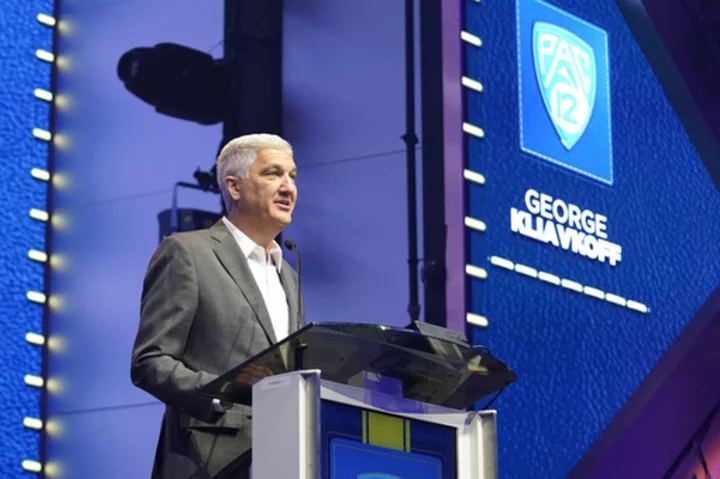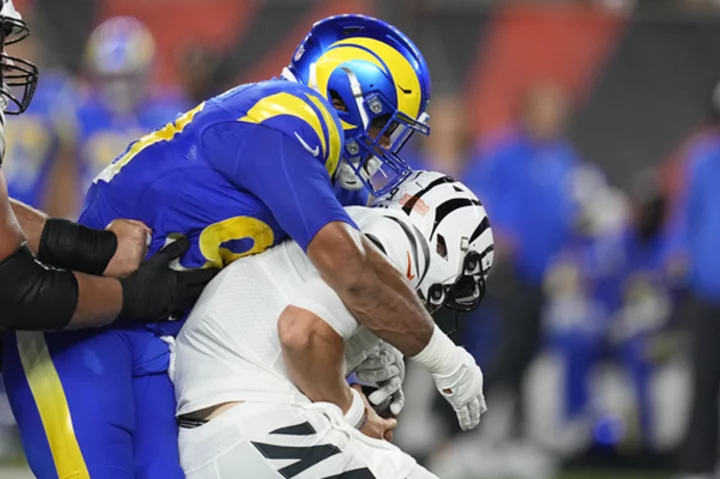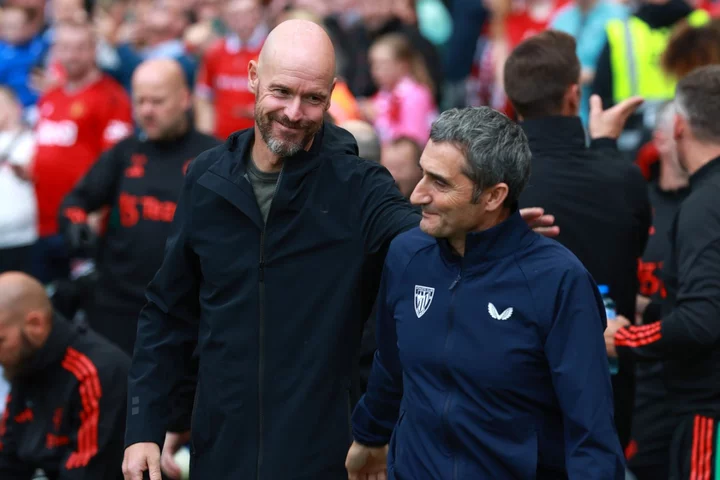The conference of champions appears to be in crisis.
Colorado's announcement Thursday that it will return to the Big 12 comes a little more than a year after Southern California and UCLA said they were ditching the Pac-12 to join the Big Ten. It leaves the league that has won more NCAA championships than any other facing an uncertain future.
Still, without a media rights contract to replace ones that expires next summer, Pac-12 Commissioner George Kliavkoff keeps promising that all will be well. It is becoming harder to sell that no news on a deal is good news.
Colorado's exit alone is not a death blow for the Pac-12. Losing a school that has been fielding one of the worst Power Five football programs for most of the last decade is recoverable, even with new coach and retired NFL star Deion Sanders grabbing headlines in Boulder.
However, there is no way to spin this latest hit as anything but a loss for a conference that has been the power center of West Coast college sports for decades. Colorado is a newbie, but USC’s membership dates to 1922, UCLA’s to 1928. The roots of the Pac-12 date to 1915 and its sports alumni include such names as Jackie Robinson, John Elway, Macus Allen, Reggie Miller, Jackie Joyner-Kersee, Jenny Thompson, Bill Walton and Barry Bonds.
To survive, the Pac-12 will almost surely try to add new member schools.
The questions now: Can the Pac-12 stop bleeding membership? And if not, does it trigger conferences beyond the Big 12 to target its schools? Will CU's move trigger another wide-ranging round of realignment?
“I don't believe it does” said former Fox Sports executive Bob Thompson. “A lot of that comes down to how fast the Big 12 wants to expand. I don't see the SEC, the Big Ten, the ACC doing anything at this point.”
Under previous Big Ten Commissioner Kevin Warren, the Big Ten still had eyes out west, with Oregon and Washington having the most appeal of the remaining Pac-12 schools. But Warren is gone now and his replacement said the Big Ten isn't eager to expand more.
“All the direction I’m getting from leadership ... is to focus on USC and UCLA. We have a lot of work to do there,” new Commissioner Tony Petitti said at Big Ten football media days earlier this week.
The continuing threat to the Pac-12 is primarily the Big 12, despite Kliavkoff's dismissals (“The truth is we have bigger fish to fry,” he said last week in Las Vegas at football media day.)
Pac-12 presidents and chancellors, athletic directors and Kliavkoff were expected to meet Thursday to discuss next moves for the conference, two people with knowledge of the meeting told AP on condition of anonymity because the conference was not making its internal discussion public.
Brett Yormark has outmaneuvered Kilavkoff since being named Big 12 commissioner a day before USC and UCLA announced they planned to switch conferences. He has envisioned a 16-team league that covers all time zones.
The Big 12 jumped the Pac-12 in line last year and grabbed a deal with ESPN and Fox that probably could have been the Pac-12's. While Kliavkoff was trying to figure out a way to close the revenue gap on the Southeastern Conference and the Big Ten, Yormark realized survival was at stake for the other Power Five conferences.
The Big 12 replaced the star quality brands of Texas and Oklahoma with quantity and reach (BYU, Houston, UCF and Cincinnati). The Big 12 will never catch up at the bank to the SEC and Big Ten, but it has more stability and harmony than the beleaguered Pac-12 and anxious Atlantic Coast Conference.
“What CU did is ensure their future. Whether the Pac-12 implodes now or whether the Pac-12 implodes in 2030 or whether the Pac-12 stays together, CU is set,” Thompson said.
Adding Arizona, Arizona State and Utah from the Pac-12 to join Colorado would make Yormark's vision a reality, but those schools are still publicly committed to their current conference.
Arizona President Robert Robbins said in June the preference is to remain in the Pac-12, but until he knows exactly what a media rights deal pays, nothing is certain.
“We’re not going to get a Big Ten deal. We’re not going to get an SEC deal,” Robbins said then. “I’ve never thought that winning the bronze medal was a great aspirational goal. But if we win a bronze medal, I think we’d all declare victory.”
Thompson said as ESPN and other traditional networks deal with a changing financial model because of shrinking cable TV subscribers, they have become more selective and frugal when it comes to buying the right to broadcast games.
Still, less traditional networks for sports like the CW and Ion could provide a home and enough revenue to keep what's left of the Pac-12 together for at least one more deal, Thompson said.
“They've just got to get a deal done,” he said.
The best-case scenario for the Pac-12 is that it finally lands a TV contract comparable to the Big 12's (about $2 billion over six years) and the remaining members stay put.
Swapping out Colorado for, say, San Diego State, which awkwardly tried to position itself to exit the Mountain West in 2024 earlier this month, would mitigate the damage. The Aztecs and SMU have already been on the Pac-12's radar to replace USC and UCLA.
The worst-case scenario? The Pac-12 losses all the four corner schools to the Big 12, the Big Ten is motivated to reverse course and add some combination of Oregon, Washington, Stanford and California. If not all of them. Instead of the Pac-12 absorbing Mountain West schools, the Mountain West could go on the offensive.
The Pac-12 dates back 108 years with the formation of the Pacific Coast Conference. Over a century, it went from the Pac-8 to the Pac-10 to the Pac-12, accumulating more than 500 NCAA championships .
That prestigious legacy is no guarantee of its future.
___
Follow Ralph D. Russo at https://twitter.com/ralphDrussoAP and listen at http://www.appodcasts.com
___
AP college football: https://apnews.com/hub/college-football and https://twitter.com/ap_top25









